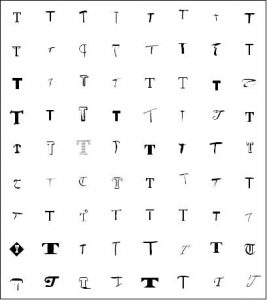
 In case you don’t know what a 72t distribution is, this is shorthand for the Internal Revenue Code Section 72 part t (or IRC §72(t) for short), and the most popular provision of this code section is known as a Series of Substantially Equal Periodic Payments – SOSEPP is the acronym.
In case you don’t know what a 72t distribution is, this is shorthand for the Internal Revenue Code Section 72 part t (or IRC §72(t) for short), and the most popular provision of this code section is known as a Series of Substantially Equal Periodic Payments – SOSEPP is the acronym.
Enough about the code section already. What exactly is this thing? A SOSEPP is a method by which you can access your IRA funds prior to age 59½. In order to take advantage of this rule, you determine the amount of the annual distribution from your IRA (this is done in a prescribed manner, more on this in a bit) and then begin taking the distributions. Once you start the SOSEPP, you have to keep it going for the longer of five years or until you reach age 59½.
Methods of Distribution
There are three ways that you can determine the amount of the distribution from your IRA, and all are based upon the balance of the IRA account and your age. The first method is the simplest, known as the Required Minimum Distribution method.
The Required Minimum Distribution method for calculating your Series of Substantially Equal Periodic Payments (described in full under IRC §72(t)(2)(A)(iv)) calculates the specific amount that you must withdraw from your IRA (or other retirement plan) each year, based upon your account balance at the end of the previous year, divided by the life expectancy factor from either the Single Life Expectancy table, the Uniform Lifetime table, or the Joint Life and Last Survivor Expectancy table, using the age(s) you have reached (or will reach) for that year. This annual amount will be different each year.
The second method is called the Fixed Amortization Method. Calculating your annual payment under this method requires you to have the balance of your IRA account at the end of the prior year, from which you then create an amortization schedule over a specified number of years equal to your life expectancy factor from either the Single Life Expectancy table, the Uniform Lifetime table, or the Joint Life and Last Survivor Expectancy table, using the age(s) you have reached (or will reach) for that year, coupled with a rate of interest of your choice that is not more than 120% of the federal mid-term rate published by regularly the IRS in an Internal Revenue Bulletin (IRB).
The third method is similar to the second, but it is called the Fixed Annuitization Method. Calculating your annual payment under this method requires you to have the balance of your IRA account from the end of the prior year and an annuity factor, which is found in Appendix B of Rev. Ruling 2002-62 using the age you have reached (or will reach) for that year, coupled with a rate of interest of your choice that is not more than 120% of the federal mid-term rate published by regularly the IRS in an Internal Revenue Bulletin (IRB).
Once you’ve calculated your annual payment under one of the two fixed methods, your future payments will be exactly the same each year until the SOSEPP is no longer in effect. There is a one-time opportunity to change to the Required Minimum Distribution method, described here.
An Important Note
It’s important to know that the amounts you’ve calculated are and will be the exact figures for your payments from the account, no more, no less. It’s not allowable to simply name your own amount and take that each year – you have to use the prescribed amount from one of the methods. No deviation from the prescribed amount is allowed.
The one way to impact the amount of the payment is to adjust the balance in the IRA. If you have more than one IRA available, you can rollover funds into one account prior to enacting the SOSEPP and therefore increase or decrease your payment. This has to be done prior to establishing the SOSEPP though – it’s not allowed to deposit money into or remove funds from your IRA while the SOSEPP is in place (well, other than the required payments from the account each year).
Any deviation from the prescribed payments will cause the SOSEPP to be “busted”, which can result in some not-so-nice consequences – which you can read more about here.







